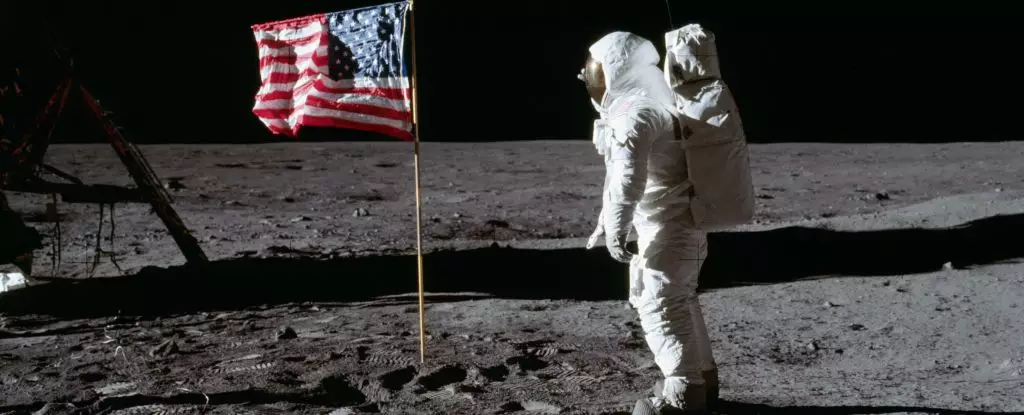The Moon, once regarded as a pristine celestial body, has been significantly altered by human activity over the past half a century. From our first steps on its gray and cratered surface to the remnants of crashed spacecraft and even our own waste, signs of human presence now mark the Moon. Scientists argue that it is crucial for us to acknowledge this reality and take action. In a new paper, researchers propose declaring a new epoch on the Moon called the Lunar Anthropocene, with its inception dating back to 1959 when Russia’s Luna 2 spacecraft landed. This parallels the concept of the Anthropocene on Earth, which recognizes the significant impact of human activities on our planet.
Humans have an extraordinary ability to adapt to and thrive in diverse and unfamiliar environments. We have made ourselves at home wherever we venture, leaving traces of our existence behind. When we ventured into space, we brought our waste with us, resulting in a littered space surrounding Earth. Similarly, when we send spacecraft to the Moon, we leave behind evidence of our presence in the form of abandoned equipment, garbage, or the impact and debris from spacecraft crashes. Justin Holcomb, a planetary geoarchaeologist from the University of Kansas, explains that human activities are beginning to surpass natural geological processes on the Moon. The disturbances caused by rovers, landers, and human movement significantly disrupt the Moon’s regolith, the term used for its moving sediments. Holcomb emphasizes that the landscape of the Moon will be drastically altered in the next 50 years due to the ongoing space race.
Beyond the ecological impact, efforts to preserve our essential lunar cultural history are lacking. The footprints, flags, photographs, and other artifacts from the crewed lunar exploration of the 1960s and 1970s represent significant milestones in human history. Archaeologists view these imprints as a testament to humanity’s journey beyond our planet, marking a pivotal moment in our species’ existence. However, little is being done to track and protect these valuable remnants. Holcomb stresses the importance of recognizing these artifacts as part of our heritage. They are intertwined with our overarching narrative of evolution and should be preserved for future generations.
The impact of human activities on the Moon extends beyond simple surface disturbances. It poses risks to the delicate lunar environment, including its reserves of water ice and the tenuous exosphere enveloping its surface. The increased exploration and potential colonization efforts in the coming years heighten the urgency to address and mitigate these risks. By acknowledging the Lunar Anthropocene, we can foster a collective responsibility to protect the Moon’s unique features and ecological balance.
To fully understand and assess the extent of human impact on the Moon, systematic measurement and cataloging of these changes are crucial. Scientists propose implementing comprehensive monitoring mechanisms to track and evaluate the transformation of the lunar landscape. By collecting data on the changing regolith, identifying the effects of spacecraft crashes and other disturbances, and documenting the growth of human presence on the Moon, we can create a comprehensive understanding of the Lunar Anthropocene.
As we venture further into space, it is essential to learn from our past mistakes and prioritize responsible exploration. The lessons learned from the Lunar Anthropocene can guide future missions to other celestial bodies. By addressing the impacts of human activity on the Moon, we can develop protocols and strategies to minimize our ecological footprint as we explore and colonize other planets and moons.
The declaration of the Lunar Anthropocene serves as a call to action for scientists, policymakers, and space agencies. Collaboration and international cooperation are key to managing human impact on the Moon effectively. We must strive to strike a balance between scientific exploration and environmental preservation. By acknowledging and addressing the Lunar Anthropocene, we can ensure the sustainable exploration of space and protect the cultural heritage of humanity’s first steps into the cosmos.
The Moon is no longer the untouched entity it once was. Human activity has left an indelible mark on its surface and environment. The concept of the Lunar Anthropocene emphasizes the need to recognize and evaluate our impact to protect the Moon’s ecological balance and preserve our cultural heritage. Through scientific monitoring, responsible exploration, and international cooperation, we can navigate the future of space exploration while minimizing our footprint on celestial bodies.


Leave a Reply